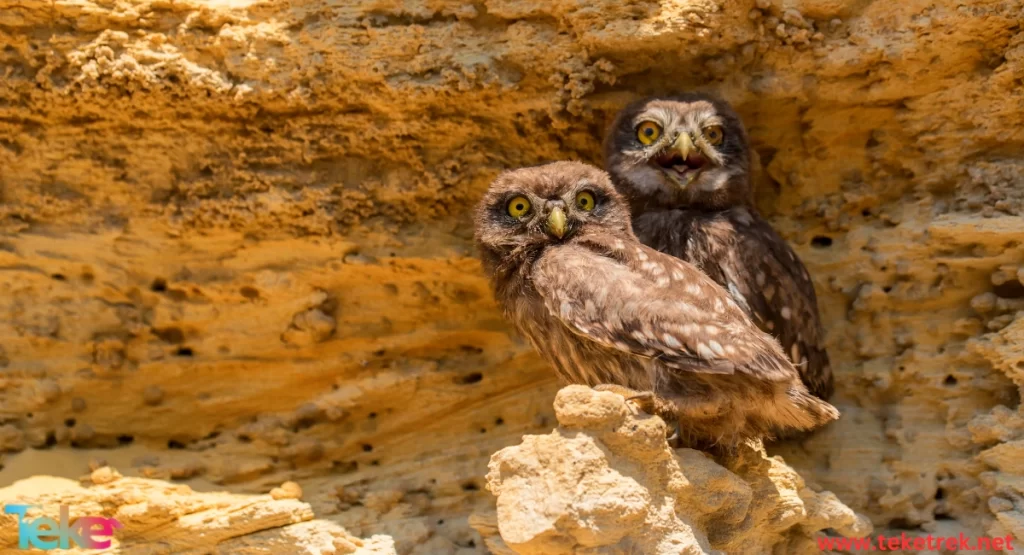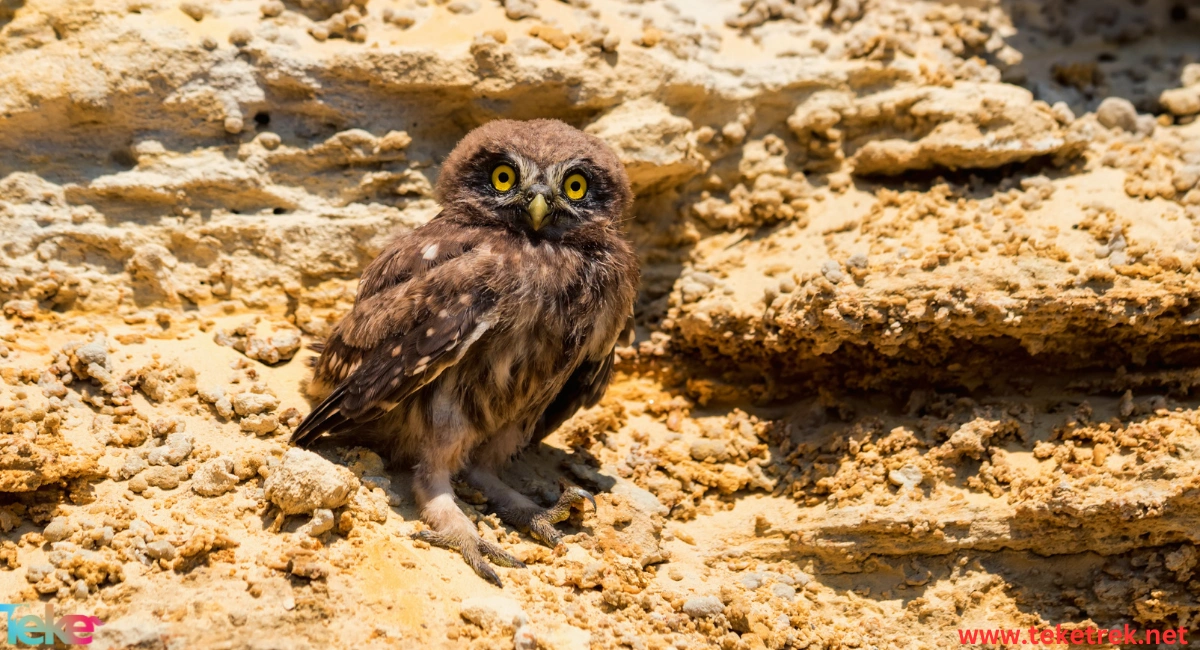The rock owl is distinguished by its heart-shaped head. It is found nesting between rocks in various regions around the world.
Below on the teketrek website, we will talk more about it. We will present its characteristics, food, and locations.

About the rock owl
The rock owl, barn owl, sucker, or hamster, is a white owl, or barn owl, or barn owl of the order Strigiformes, family Tytonidae.
Characteristics of the rock owl
The rock owl is a medium-sized owl, with a heart-shaped face, and the upper parts of its body are spotted in gray, yellow-brown, and brown, while the lower parts of males are pale and yellow in females:
- Its length is about 30 cm.
- Its legs are long, and its head is large and round.
- Its wings are round, and its tail is short, with white or light brown feathers.
- Female rock owls are larger than males in terms of size, as they weigh about 570 g, while males weigh about 470 g, and females are also longer.
Food of the rock owl
Rock owls depend on small mammals for their food, for example mice, rats, muskrats, hares, or even small birds.
- The owl swallows its prey whole, including bones, fur, and claws.
- Then they excrete all the materials that they cannot digest in the form of pellets, which they use to build their nests, along with fur or feathers, and the bark and leaves of trees.
- The rock owl begins hunting alone at sunset. It relies on sensitive vision in low light, or its sharp sight.
- The rock owl can approach its prey without being detected due to the softness of its feathers.
- Rock owl attacks its prey, grabs it with its feet, then bites off the back of the skull using its beak and then swallows it whole.
Reproduction in rock owls
The rock owl is a monogamous bird. It breeds once a year and at any time during it, depending on several factors, including the abundance of food and the food supply.
- They usually start breeding at the age of one year due to their short lifespan.
- They also reproduce only once or twice during their life.
- The female lays several eggs, ranging in number from 2 to 18 eggs, at a rate of one egg every two days.
- The female incubates the eggs for a period ranging from 29 to 34 days.
- The females also feed the young for 25 days after they hatch, while the males bring the food.
- They then leave the nest and fly about 50 to 70 days after hatching.
- The children are then independent from their parents after a period ranging from three to five weeks of flying.


Rock owl habitats
It is also considered the most widespread among the various types of owls, and can be found anywhere around the world.
- It is found on every continent except Antarctica. You may find it in North, Central, and South America, or even in Europe, Asia, and Africa.
- The rock owl lives in various habitats, both rural and urban.
- They may be found at low elevations in open habitats, for example: swamps, grasslands, agricultural fields, and deserts.
- Mother rocks build their nests in cavities, for example hollow trees, or in cliffs, river banks, towers, etc.
FAQ
Among the most common questions about rock owls:
- What does an owl look like?
The size of the rock owl is medium, ranging in length from 35 cm to 89 cm. It is distinguished from other species by its heart-shaped face and black eyes.
- What are the benefits of owl?
The owl is one of the most useful birds for farmers, as it eliminates rodents that are harmful to crops, including: field mice, rats, and rabbits.
- What is the largest owl in the world?
Blakiston’s fish owl is the largest types of owls in the world.
- What is the largest Indian owl?
Indian Eagle Owl is the largest Indian owl.
In short, the rock owl is a monogamous, egg-reproducing carnivorous bird found in various parts of the world.






